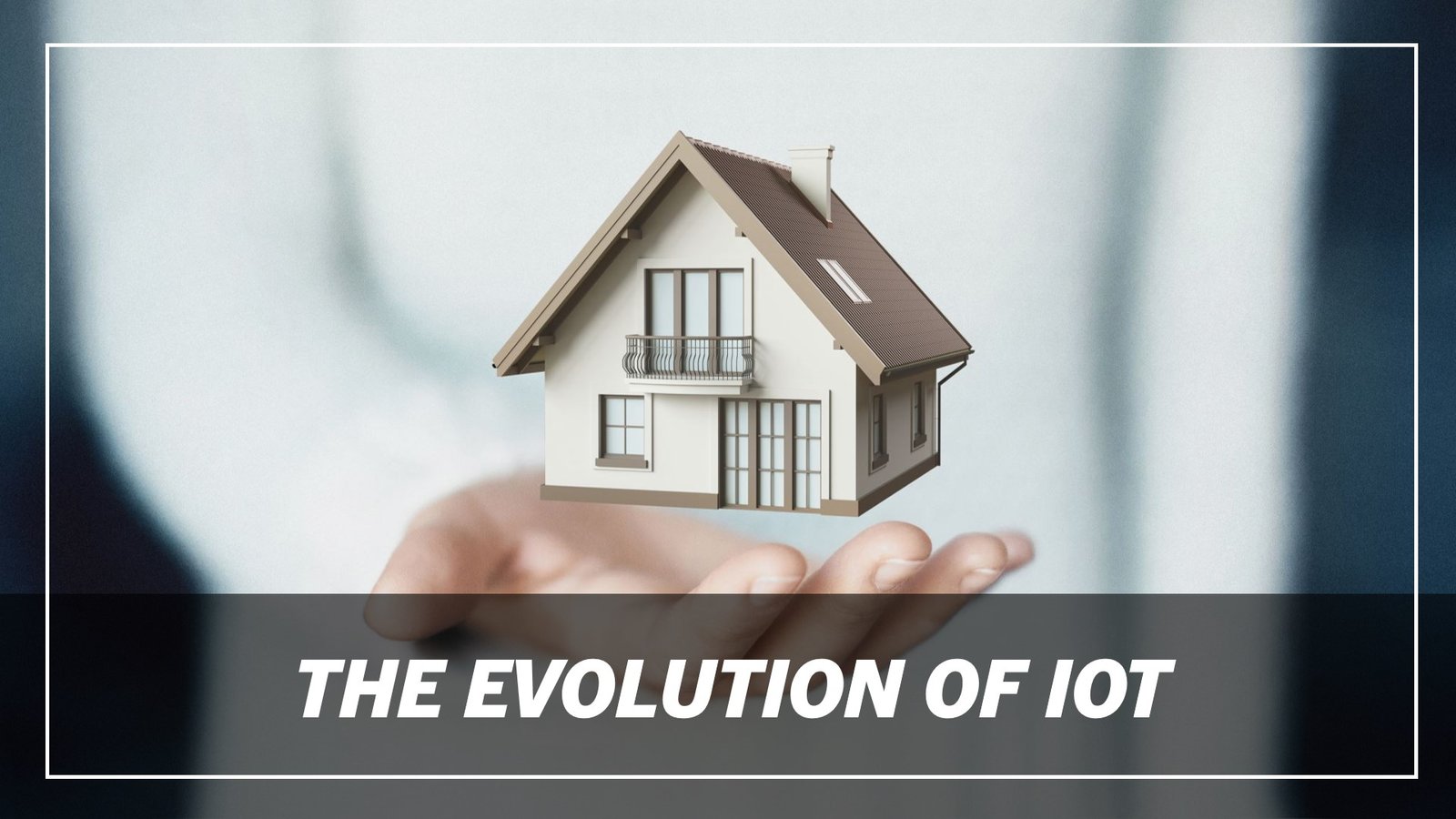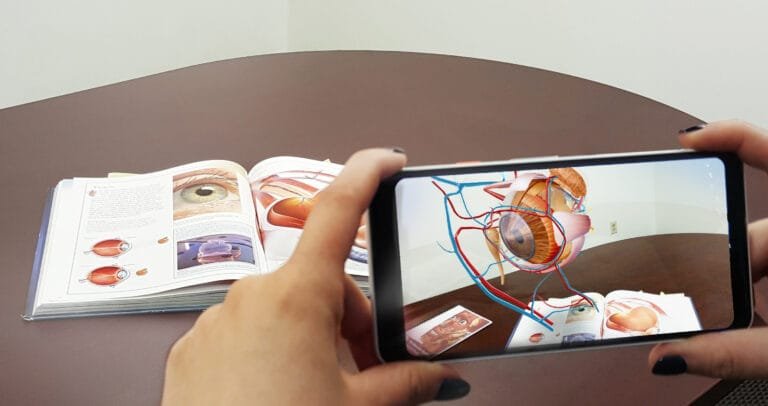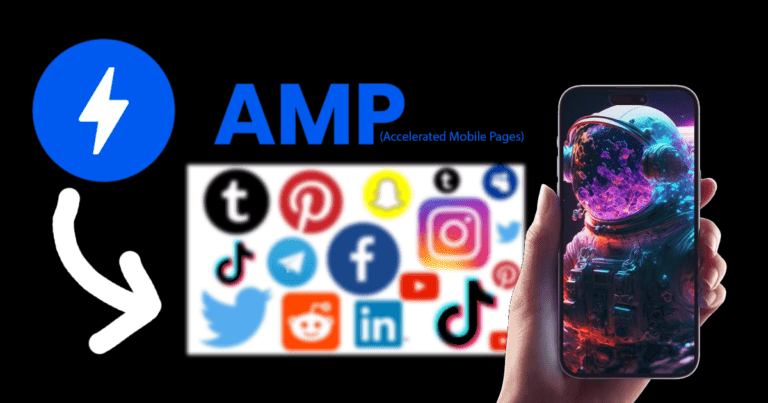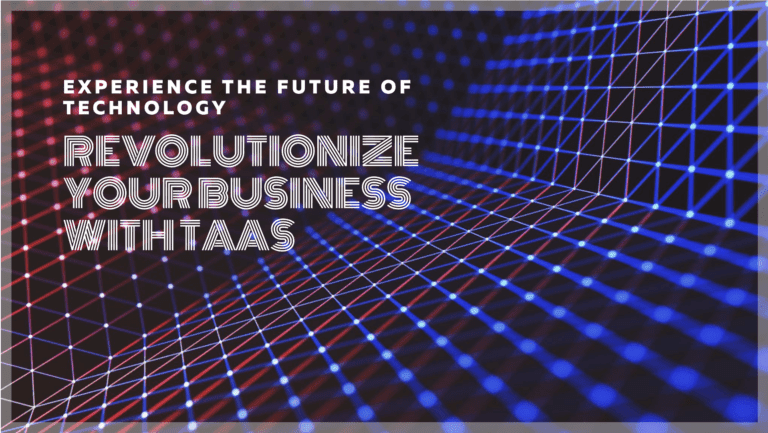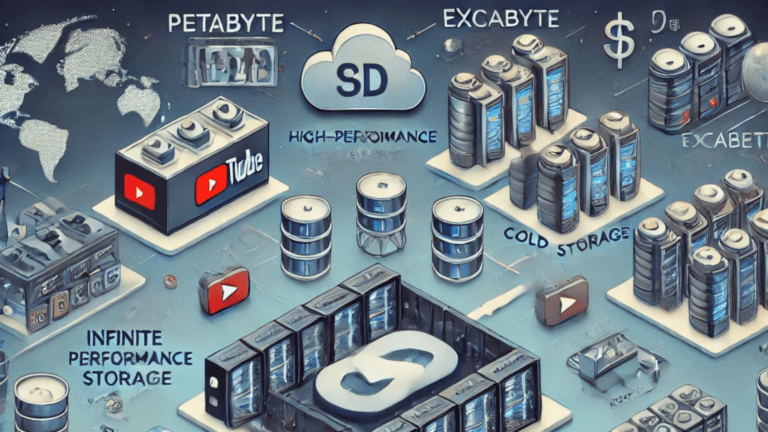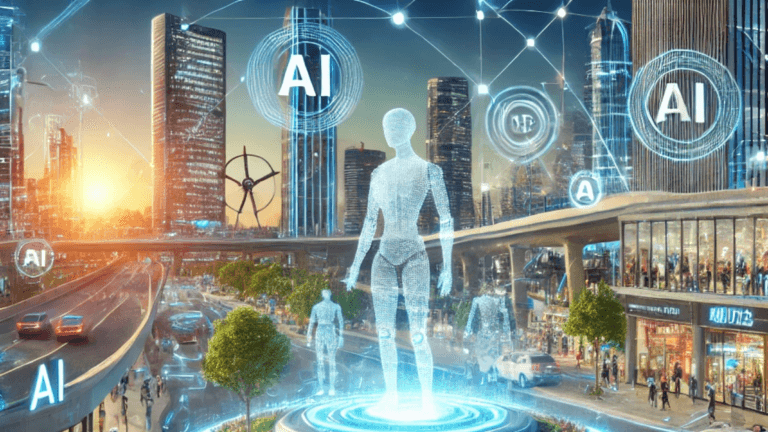Introduction to The History of the Internet of Things
The history of the Internet of Things (IoT) is a fascinating journey through the evolution of connectivity, beginning with simple telecommunication devices and culminating in today’s complex network of smart devices. As we live in a world where almost every device—from smartphones to refrigerators—can communicate with each other, understanding how IoT emerged is key to grasping its profound impact on society. This article traces the history of the Internet of Things, delving into its early concepts, pivotal moments, and future potential.
The story of IoT isn’t just about technology; it’s about how connectivity has revolutionized the way we interact with the world around us. By exploring the key milestones, we can better appreciate the technological advancements that have shaped today’s digital age. We’ll touch upon everything from the rise of RFID technologies in the late 20th century to the explosion of smart devices in the 21st century. We’ll also consider how IoT has transformed industries like healthcare, manufacturing, and transportation while posing new challenges around security and privacy.
Let’s dive into the history of IoT, explore its early roots, and follow its rapid development from theoretical concept to everyday reality.
Early Concepts of Connected Devices
The foundation of the history of the Internet of Things can be traced back to the early telecommunication networks and other innovative devices of the 19th and 20th centuries. While today’s IoT is heavily dependent on the internet, the idea of “connected devices” existed long before the advent of the web. A key example is the invention of the telegraph, which enabled the transmission of messages across vast distances and laid the groundwork for global communication networks.
1. The Telegraph:
- The telegraph, developed in the 1830s and 1840s, represents one of the earliest forms of connected technology. It allowed messages to be sent over long distances using electrical signals, forming a crucial part of the early history of the Internet of Things.
2. Radio and Television:
- The development of radio in the early 20th century and television in the mid-20th century expanded the concept of connectivity. These technologies enabled the broadcast of audio and visual content to a broad audience, paving the way for more sophisticated forms of connected devices.
3. Early Computer Networks:
- In the 1960s and 1970s, the advent of computer networks like ARPANET laid the groundwork for what would become the internet. This period is a significant part of the history of the Internet of Things as it introduced the concept of interconnected computer systems.
Evolution of the Internet and Connected Devices
1. The Birth of the Internet:
- The creation of the internet in the late 20th century marked a pivotal moment in the history of the Internet of Things. The development of the TCP/IP protocol suite enabled different networks to interconnect, leading to the global internet we know today.
2. Early Connected Devices:
- In the 1980s and 1990s, the first connected devices, such as automated teller machines (ATMs) and early mobile phones, began to appear. These devices utilized the burgeoning internet to offer new levels of connectivity and functionality.
The Rise of Modern IoT
1. The Term “Internet of Things”:
- The term “Internet of Things” (IoT) was coined by Kevin Ashton in 1999 while working on a project at MIT. This concept became a defining moment in the history of the Internet of Things, marking the beginning of the modern IoT era.
2. Development of IoT Technologies:
- The 2000s saw rapid advancements in technology, including the development of wireless communication protocols like Wi-Fi, Bluetooth, and Zigbee. These technologies are central to the modern history of the Internet of Things as they enable devices to connect and communicate without physical wires.
3. Proliferation of IoT Devices:
- The 2010s witnessed an explosion in the number and variety of IoT devices. From smart home gadgets like thermostats and security cameras to industrial sensors and wearable health monitors, the range of IoT applications expanded dramatically, cementing their place in the history of the Internet of Things.
Key Milestones in the History of the Internet of Things
1. Smart Home Devices:
- The introduction of smart home devices, such as Amazon Echo and Google Home, marked a significant milestone in the history of the Internet of Things. These devices integrated voice control and connectivity, enhancing convenience and functionality for consumers.
2. Industrial IoT:
- The application of IoT in industry, often referred to as Industrial IoT (IIoT), revolutionized manufacturing, logistics, and maintenance. IoT devices in industrial settings provide real-time monitoring and analytics, improving efficiency and reducing costs.
3. Wearable Technology:
- The launch of wearable devices, such as Fitbit and Apple Watch, represents another key milestone in the history of the Internet of Things. These devices offer health and fitness monitoring, integrating seamlessly into users’ daily lives.
4. Autonomous Vehicles:
- Autonomous and connected vehicles represent the cutting edge of IoT innovation. By leveraging IoT technologies, these vehicles can communicate with each other and with infrastructure, enhancing safety and efficiency on the roads.
Current Trends and Future Directions
1. AI and Machine Learning:
- The integration of AI and machine learning into IoT devices is driving the next wave of innovation. These technologies enable devices to process data locally and make intelligent decisions, marking a new chapter in the history of the Internet of Things.
2. Edge Computing:
- Edge computing is becoming increasingly important in the IoT landscape. By processing data closer to where it is generated, edge computing reduces latency and bandwidth use, offering more efficient and responsive IoT systems.
3. 5G Connectivity:
- The rollout of 5G networks is set to revolutionize the history of the Internet of Things by providing faster and more reliable connectivity. This will enable a new generation of IoT applications, from smart cities to enhanced healthcare solutions.
4. Security and Privacy:
As the number of connected devices grows, so do concerns about security and privacy. Ensuring robust security measures and protecting user data are critical challenges in the ongoing development of the history of the Internet of Things.
The Telegraph and the Birth of Communication Networks
The telegraph, introduced in the mid-19th century, revolutionized long-distance communication by enabling messages to be transmitted across vast distances in mere moments. This breakthrough was instrumental in laying the foundation for the history of the Internet of Things (IoT). For the first time, machines were no longer isolated entities, but part of a broader, interconnected system, signaling the beginning of communication networks. The telegraph was simple compared to today’s sophisticated devices, yet it demonstrated a fundamental concept: the ability for machines to interact and share information over significant geographical distances. This early innovation foreshadowed many aspects of what would later become the evolution of IoT.
As a critical moment in the history of the Internet of Things, the advent of the telegraph demonstrated how communication networks could transform industries, economies, and everyday life by facilitating real-time information exchange. Though basic in its capabilities, the telegraph network proved that devices could be linked in a system, much like today’s IoT devices. Its success laid the technical and conceptual groundwork for future advancements, including ARPANET, and helped initiate the journey toward Kevin Ashton and IoT developments decades later.
ARPANET: The Precursor to the Internet
Building on the early groundwork set by the telegraph, ARPANET emerged in the late 1960s as a crucial milestone in the history of the Internet of Things. Created by the U.S. Department of Defense, ARPANET was a pioneering project designed to connect computers across research institutions and universities. Initially developed as a military initiative, it became the world’s first operational packet-switching network and laid the foundation for the modern internet. This shift represented a leap forward in the evolution of IoT, showcasing the potential of interconnected devices to share data across large networks.
The IoT milestones marked by ARPANET include the introduction of protocols for digital communication, the decentralization of computing power, and the development of techniques for remote access to networked systems. These early innovations demonstrated that a distributed network of devices could share information, an essential aspect of IoT. Without ARPANET’s success in connecting machines and people through a global network, today’s IoT landscape—where billions of devices communicate in real-time—might have evolved very differently.
Early Smart Devices and Visionaries
Even as ARPANET was developing, forward-thinking researchers began imagining a world where not just computers but everyday objects could be networked. This vision would eventually lead to the emergence of Kevin Ashton and IoT. By the late 1980s and early 1990s, the first glimpses of smart technology started to materialize. One famous example was the invention of the “smart toaster,” a simple device networked to allow remote control. While seemingly insignificant, this innovation represented a leap in the evolution of IoT and signified a new way of thinking about connected devices.
In 1990, John Romkey demonstrated the first-ever internet-connected toaster at an INTEROP conference, turning a mundane household item into an early example of IoT. Although this was only a small-scale demonstration, it highlighted the vast potential of embedding connectivity into everyday devices. These early projects set the stage for the IoT milestones that followed, as researchers began to explore how objects could sense their environment, communicate with each other, and respond to user input in real-time.
Development of IoT Technologies
The late 20th century brought significant advancements in networking technologies, making the evolution of IoT more practical. Wireless communication standards, such as Wi-Fi, Bluetooth, and Zigbee, became central to enabling devices to connect and share data without the need for physical wires. This marked a pivotal moment in the history of the Internet of Things because it allowed for increased mobility, flexibility, and scalability in IoT systems. These technologies bridged the gap between theoretical concepts and real-world applications, transforming how devices could interact with each other.
As wireless protocols advanced, so did the development of low-power sensors, more sophisticated processing units, and better battery technologies. The evolution of IoT was accelerating as these elements combined to create more capable, energy-efficient devices capable of operating independently for extended periods. This era saw a shift from isolated smart devices to complex networks of interconnected systems, demonstrating the growing potential of IoT in both consumer and industrial settings.
Modern IoT and Its Expansion
The explosion of IoT in the 2010s represents one of the most significant IoT milestones to date. Consumer adoption surged, particularly with the introduction of devices such as smart thermostats, security cameras, and voice-activated assistants like Amazon Echo and Google Home. These devices highlighted the growing role IoT was playing in everyday life, providing users with unprecedented control over their environments. The history of the Internet of Things reached new heights as IoT became a household concept, expanding from niche technical applications to the mainstream.
Beyond the consumer sector, industrial IoT (IIoT) gained significant traction. Industries like manufacturing, agriculture, and logistics began deploying IoT sensors to monitor operations, predict maintenance needs, and optimize resource usage. This marked a major milestone in the evolution of IoT, as it demonstrated the versatility of IoT technologies across different fields. IoT applications in areas like smart cities, healthcare, and transportation systems began to grow, cementing the technology’s role as a foundational component of the modern world.
Key Milestones in the History of the Internet of Things
The history of the Internet of Things is punctuated by several key milestones that have shaped its development. One of the earliest of these was the integration of smart home devices, such as Google Home and Amazon Echo. These devices revolutionized the concept of connectivity within the household by offering seamless integration between various smart gadgets, controlled via voice commands or smartphones. This ease of use and convenience helped drive the evolution of IoT in personal consumer spaces.
In the industrial sector, IoT milestones were marked by the rise of IIoT, which applied IoT technologies to optimize and automate large-scale operations. Wearable technology also emerged as a significant milestone, as devices like Fitbit and Apple Watch provided real-time health and fitness tracking, blending IoT with personal wellness. The development of autonomous vehicles, utilizing IoT for communication and navigation, stands at the forefront of IoT innovation. These connected cars leverage real-time data to improve safety and efficiency on the road, offering a glimpse into the future of IoT-enabled transportation.
Future Directions in the History of the Internet of Things
Looking ahead, the evolution of IoT is expected to be driven by key trends such as AI and machine learning, edge computing, and 5G connectivity. As IoT devices become more intelligent, they will not only collect and transmit data but also process it locally to make informed decisions in real time. This integration of AI represents the next IoT milestone, pushing IoT systems beyond simple data collection toward autonomous action.
At the same time, edge computing promises to improve the responsiveness and efficiency of IoT systems by processing data closer to the source. This reduces latency and enables IoT systems to function effectively even in areas with limited internet access. Additionally, 5G networks will supercharge the history of the Internet of Things by providing faster, more reliable connectivity, opening up possibilities for new applications in smart cities, healthcare, and agriculture.
However, as IoT continues to evolve, challenges related to security and privacy will remain critical. Ensuring that connected devices are secure and that user data is protected will be essential as IoT systems become more pervasive and complex.
The history of the Internet of Things is far from over. As new technologies and applications continue to emerge, IoT will increasingly shape how we live, work, and interact with the world around us. The journey from the telegraph to today’s hyper-connected IoT ecosystem reflects a continual process of innovation, demonstrating that the potential of IoT is vast and ever-expanding.
The Birth of IoT
The term “Internet of Things” was coined by Kevin Ashton in 1999 during his work at Procter & Gamble. Ashton’s vision centered around RFID (Radio Frequency Identification) technology, which allowed objects to be identified and tracked automatically via wireless communication. The idea was revolutionary: physical objects could be integrated into the digital world, allowing for automatic data collection and communication.
Kevin Ashton and RFID Technology
Kevin Ashton is widely credited with coining the term “Internet of Things” (IoT) in 1999. His pioneering work with RFID (Radio-Frequency Identification) technology at MIT’s Auto-ID Center laid the foundation for the modern history of the Internet of Things. RFID technology became one of the earliest practical applications of IoT, demonstrating how physical objects could be embedded with sensors and connected to the internet.
RFID Technology:
- Functionality: RFID technology involves using electromagnetic fields to automatically identify and track tags attached to objects. These tags contain electronically stored information that can be read from a distance, without requiring direct line-of-sight.
- Supply Chain Revolution: By embedding RFID tags in products, it became possible to track goods throughout the supply chain with minimal human intervention. This advancement greatly improved inventory management, logistics, and theft prevention, making supply chains more efficient and transparent.
- Early IoT Applications: RFID technology showcased the potential of connected devices. Ashton’s work illustrated that everyday objects could be connected and monitored using networked systems, forming a crucial chapter in the history of the Internet of Things.
Evolution and Expansion of IoT
The history of the Internet of Things continued to evolve with the development of new technologies and expanding applications. Let’s delve into some key milestones and the growth trajectory of IoT:
1. Internet Proliferation and Network Advancements:
- The Internet Boom: The widespread adoption of the internet in the 1990s and early 2000s provided the necessary infrastructure for IoT to flourish. As more devices became internet-enabled, the concept of interconnected systems gained traction.
- Wireless Communication Protocols: The development of wireless technologies like Wi-Fi, Bluetooth, and Zigbee further advanced IoT. These protocols enabled devices to communicate wirelessly, breaking the constraints of wired connections and facilitating the growth of IoT networks.
2. Smart Homes and Consumer IoT Devices:
- Smart Home Devices: The introduction of smart home devices marked a significant milestone in the history of the Internet of Things. Products like Amazon Echo and Google Home integrated voice control and connectivity, bringing IoT into everyday life. These devices allowed users to control lights, thermostats, and security systems with voice commands, enhancing convenience and functionality.
- Wearable Technology: Wearable devices, such as fitness trackers and smartwatches, emerged as popular consumer IoT products. These devices offer health and fitness monitoring, providing users with real-time data on their physical activity and wellbeing.
3. Industrial IoT (IIoT):
- Transforming Industries: The application of IoT in industrial settings, known as Industrial IoT (IIoT), revolutionized manufacturing, logistics, and maintenance. IoT devices in industrial environments provide real-time monitoring and analytics, improving operational efficiency, predictive maintenance, and overall productivity.
- Smart Factories: IIoT enabled the concept of smart factories, where interconnected machines communicate with each other and with central systems to optimize production processes. This integration represents a significant advancement in the history of the Internet of Things, driving innovation and competitiveness in the industrial sector.
Recent Developments and Future Trends
The history of the Internet of Things is a story of continual innovation and adaptation. Recent developments and emerging trends are shaping the future of IoT:
1. Integration of Artificial Intelligence (AI):
- AI and Machine Learning: The integration of AI and machine learning into IoT devices is driving the next wave of innovation. These technologies enable devices to process data locally, make intelligent decisions, and learn from user interactions, enhancing the overall functionality of IoT systems.
- Smart Assistants: AI-powered smart assistants, like Amazon Alexa and Google Assistant, have become central to smart home ecosystems. These assistants use AI algorithms to understand and respond to user commands, making homes more intelligent and responsive.
2. Edge Computing:
- Data Processing at the Edge: Edge computing reduces latency and bandwidth use by processing data closer to where it is generated. This approach enhances the efficiency and responsiveness of IoT systems, particularly in applications that require real-time decision-making, such as autonomous vehicles and industrial automation.
- Edge AI: The integration of AI at the edge allows devices to perform complex data analysis locally, reducing the need for constant communication with central servers and improving the speed and reliability of IoT applications.
3. 5G Connectivity:
- Faster and More Reliable Networks: The rollout of 5G networks is set to revolutionize IoT by providing faster and more reliable connectivity. 5G’s low latency and high bandwidth enable a new generation of IoT applications, from smart cities to enhanced healthcare solutions.
- Massive IoT Deployments: 5G supports the connection of a vast number of devices simultaneously, facilitating massive IoT deployments in urban environments, agriculture, transportation, and more.
4. Security and Privacy Concerns:
- Protecting IoT Ecosystems: As the number of connected devices grows, so do concerns about security and privacy. Ensuring robust security measures and protecting user data are critical challenges in the ongoing development of the history of the Internet of Things.
- Regulatory Compliance: Governments and regulatory bodies are increasingly focusing on IoT security standards and data protection regulations to safeguard users and maintain trust in IoT systems.
The history of the Internet of Things is a journey of continual innovation and integration, transforming every aspect of our lives. From the early days of the telegraph and RFID technology to the sophisticated IoT ecosystems of today, the evolution reflects technological advancements and the growing importance of connectivity. As IoT continues to evolve, it promises to bring even more transformative changes to how we live, work, and interact with the world around us. The future of IoT holds limitless potential, marking a new chapter in the ever-expanding history of the Internet of Things.
The 2000s: A Decade of Technological Advancements
The early 2000s saw a wave of technological advancements that further propelled the IoT vision. The rise of the internet, coupled with the proliferation of smartphones and wireless communication technologies, made it feasible for devices to connect and share data seamlessly. Advancements in cloud computing provided the necessary infrastructure for storing and processing the massive amounts of data generated by IoT devices. Sensor technology also saw significant improvements, allowing for more accurate data collection from physical environments.
Major Milestones in the Evolution of IoT
The history of the Internet of Things is dotted with key milestones that reflect the growing complexity and scale of connected devices.
Smart Devices Enter the Home
In 1993, the world witnessed one of the first IoT-like devices when a camera was installed to monitor a coffee pot at the University of Cambridge. This experiment demonstrated how simple everyday activities could be enhanced through remote monitoring. In the years that followed, IoT began to make its way into consumer electronics, with devices like smart refrigerators and connected thermostats gaining popularity.
Google’s Driverless Car (2009)
In 2009, Google unveiled its driverless car, a project that relied heavily on IoT technologies to operate. The vehicle was equipped with numerous sensors, cameras, and communication tools that enabled it to navigate autonomously. This milestone showcased how IoT could be applied to complex real-world scenarios, pushing the boundaries of what connected devices could achieve.
Smart Cities and Industrial IoT
By the 2010s, the IoT had expanded beyond personal devices into broader applications like smart cities and industrial IoT (IIoT). Smart cities, for example, leverage connected devices to manage urban infrastructure more efficiently. From traffic lights to waste management systems, IoT helps optimize resources and improve the quality of life for residents. IIoT, on the other hand, has revolutionized industries like manufacturing and logistics by enabling real-time monitoring and predictive maintenance.
The Expansion and Future of IoT
As we moved into the 2020s, the IoT ecosystem experienced explosive growth. In 2020 alone, there were more than 30 billion connected devices worldwide, a number projected to exceed 75 billion by 2030. This growth is driven by the increasing demand for smarter, more efficient solutions in areas like healthcare, transportation, and energy management.
Healthcare: A Key Beneficiary of IoT
The healthcare sector has been one of the most prominent beneficiaries of IoT technology. Connected medical devices, such as smart insulin pumps, heart monitors, and fitness trackers, enable continuous monitoring of patients’ health. These devices improve the quality of care while also providing healthcare professionals with real-time data to make informed decisions.
The Future of IoT: What Lies Ahead?
Looking ahead, the future of IoT promises even greater connectivity and integration. Emerging technologies like 5G and edge computing will enable faster, more reliable communication between devices, opening up new possibilities for innovation. Smart homes will become more intelligent, industries more efficient, and cities more sustainable—all powered by IoT.
Security, Privacy, and Ethical Concerns
While the history of the Internet of Things is full of exciting developments, it also raises important questions about security, privacy, and ethics. With billions of devices connected to the internet, the risk of cyberattacks increases significantly. Hackers can exploit vulnerabilities in IoT systems to gain access to sensitive data or disrupt critical services.
Data Privacy and Surveillance
One of the most pressing concerns in the history of the Internet of Things is the issue of data privacy. IoT devices collect vast amounts of personal information, from location data to health records, raising concerns about who has access to this information and how it is used. Furthermore, the rise of smart surveillance systems has sparked debates about the ethics of using IoT for monitoring and tracking individuals.
Data Collection: IoT devices continuously collect data to function effectively, but this often includes sensitive personal information. The sheer volume of data collected poses a significant risk if it falls into the wrong hands. Unauthorized access to this data can lead to privacy breaches, identity theft, and other malicious activities.
Surveillance Ethics: The deployment of IoT devices in public and private spaces for surveillance purposes raises ethical questions. While these systems can enhance security and efficiency, they also have the potential to infringe on individual privacy. Balancing the benefits of surveillance with the right to privacy is a critical challenge in the ongoing history of the Internet of Things.
Building a Secure IoT Ecosystem
To mitigate these risks, industries and governments are investing in IoT security solutions, including encryption, secure communication protocols, and robust authentication methods. However, as IoT continues to evolve, it is crucial to maintain a balance between innovation and safeguarding privacy and security.
- Encryption: Implementing strong encryption protocols is essential for protecting data transmitted between IoT devices. Encryption ensures that even if data is intercepted, it remains unintelligible to unauthorized users.
- Authentication: Robust authentication methods are necessary to verify the identity of devices and users accessing the IoT network. Multi-factor authentication (MFA) and biometric verification are effective strategies to enhance security.
- Secure Communication Protocols: Using secure communication protocols, such as HTTPS and TLS, helps safeguard data integrity and privacy during transmission. These protocols prevent unauthorized interception and tampering of data.
- Regular Updates: Keeping IoT devices and systems up to date with the latest security patches and firmware updates is crucial. Regular updates help fix vulnerabilities and protect against emerging threats.
- Regulatory Compliance: Governments and regulatory bodies are increasingly focusing on IoT security standards and data protection regulations. Compliance with these regulations ensures that IoT ecosystems adhere to best practices in security and privacy.
- Ethical Considerations: Addressing ethical concerns is equally important in the history of the Internet of Things. Transparent data usage policies, user consent, and the minimization of data collection are key principles for ethical IoT deployment. Ensuring that individuals have control over their data and are informed about its use is fundamental to maintaining trust.
Conclusion
The history of the Internet of Things is a testament to the transformative power of connectivity. From the early days of the telegraph to the sophisticated smart cities of today, IoT has reshaped how we interact with the world. As technology continues to advance, the potential for IoT to revolutionize industries, improve quality of life, and address global challenges is limitless.
However, with these advancements come new challenges. Ensuring the security and privacy of IoT systems will be critical as the number of connected devices continues to grow. As we look to the future, it is clear that IoT will play an increasingly important role in shaping our world—pushing the boundaries of what’s possible and transforming the way we live, work, and interact.

